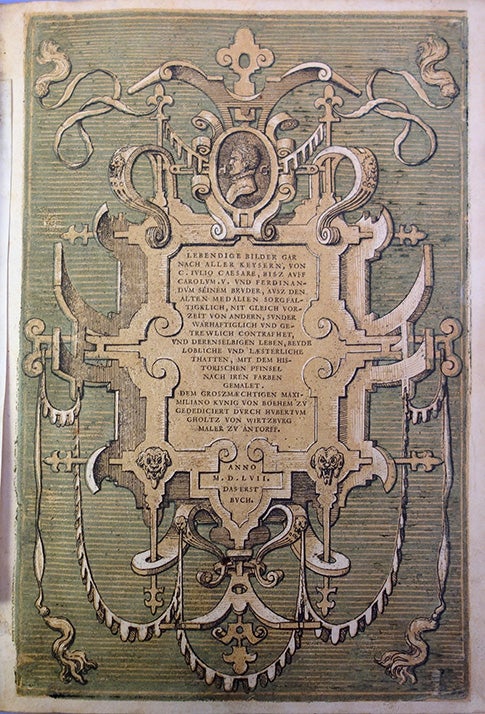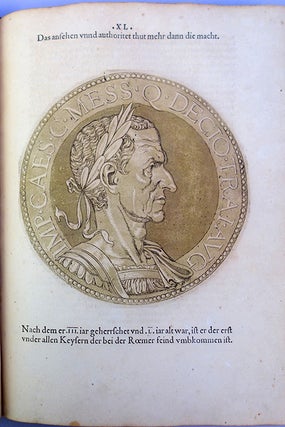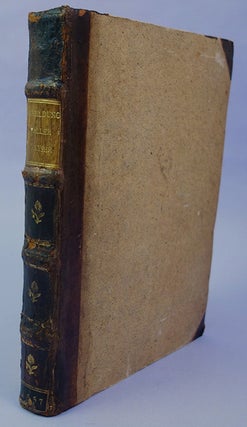Leendige Bilder Garnach Aller Keysern
Publisher Information: Antwerp: C. Diesthem, 1557.
Goltzius, Hubert (1526-83). Lebendige Bilder gar nach aller Keysern, von C. Iulio Caesare, bisz auff Carolum V und Ferdinandum seinem Bruder, aus den alten Medalien . . . Folio. 174 leaves, unpaginated (*6 a-b6 A-Z6 Az-Cc6). Title and 133 plates printed in chiaroscuro. Antwerp: In Aegidij Copenij Diesthemij Truckerey, 1557. 325 x 236 mm. 19th century half sheep, speckled boards, gilt spine (repaired), corners a bit worn. Some minor foxing and offsetting as is common with this title, otherwise a very good to fine copy. From the library of the Prince of Liechtenstein, with his bookplate.
Rare First German Edition of the First Book Extensively Illustrated with Chiaroscuro Woodcuts. Goltzius, a German numismatist, employed the Dutch artist Josse van Gietleughen to prepare medallion portraits of the Roman and Holy Roman emperors from Julius Caesar to Charles V, using a combination of woodcut and intaglio printing to produce the final chiaroscuro images. Goltzius based the portraits on his extensive research into ancient and medieval coins and medals; where he could find no satisfactory image, as with several Carolingian and Ottonian monarchs, he printed a blank roundel. Goltzius published Latin, German and Italian editions of his book in 1557; a French edition appeared in 1559 and a Spanish one in 1560. The first German edition is considere Wd to be much scarcer than the first Latin edition.
“For Goltzius’s Imperatorum imagines . . . Gietleughen cut two woodblocks per etched image . . . A darker tone provides the background for the effigy, a lighter tone the flesh-tone and the background for the inscription and the white of the paper the highlights . . . Goltzius’s combination of etching and woodcut and the careful selection of tones yielded images that resembled in color and shape the coins and medals that were his sources. Yet, in their standardized and greatly enlarged size (nearly 18 cm. in diameter), uniform vertical orientation and high degree of completeness, they almost superseded their small referents, which were often degraded, damaged or mutilated” (Stijnman and Savage, eds., Printing Colour 1400-1700: History, Techniques, Functions and Receptions, pp. 154-155).
“The chiaroscuro process, with its different shades of the same hue and white highlights, defines light and tone but not local color; it was thus especially appropriate for the reproduction of monochrome relief medals. One of the characteristics of Goltzius’s work, the use of an etched plate for the black outlines and details, had earlier been invented by Parmagianino, but was not widely adopted by the practitioners of chiaroscuro active in the sixteenth century” (Friedman, Color Printing in England, no. 2, citing the 1557 Italian edition). Strauss, Chiaroscuro. The Clair-Obscur Woodcuts by the German and Netherlandish Masters of the XVIth and XVIIth Centuries, no. 113. Le Loup, Hubertus Goltzius en Brugge 1583-1983, p. 47.
Book Id: 42456Price: $12,500.00




